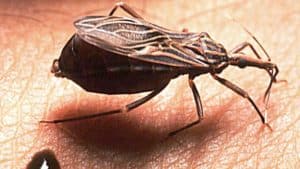CAUTI means Catheter-Associated Urinary Tract Infection. The name is self-explanatory. It is an infection associated with urinary catheters and is most commonly seen in patients who wear urinary catheters frequently and/ or for a long time. Among the hospital-acquired urinary tract infections, 75% are CAUTI. Therefore, urinary catheters should ideally be used for the shortest possible time.
Signs and symptoms of CAUTI
CAUTI produces similar clinical features as a UTI. Some of the features are:
- Cloudy (milk-like color) urine
- Foul-smelling urine
- Blood mixed urine
- Urine leakage around the catheter
- Fever
- Chills
- Weakness
- Nausea or vomiting
- Pain in the lower abdomen or lower back
Why does CAUTI happen?
CAUTI happens when bacteria or fungus enter the urinary tract through the catheter. The common causes of microbial entry and growth in CAUTI are:
- Improper way of insertion or handling catheter
- Using a catheter for longer than the recommended time. A Foley catheter should be changed once a month.
- Bacteria from bowel movements can get into the catheter. It is more common for those who use diapers.
- Backflow of urine from the urine collection bag.
What complications can happen in CAUTI?
- Due to long-term inflammation, the urethra can be narrowed.
- UTI may spread into the upper urinary tract (for example – kidneys) and cause more severe infection and kidney damage.
- Bacteria or fungus from the catheter may reach the bloodstream causing sepsis. If sepsis develops patients may feel very sick, the mental capacity would be altered, and there will be fall of blood pressure.
How to diagnose CAUTI?
Diagnosing CAUTI can be challenging because Catheter-Associated Urinary Tract Infections mimics the symptoms of original UTI. But CAUTI should be suspected in all patients wearing urinary catheters for a long time.
- Urinalysis (Urine routine medical examination) can show:
- Turbid urine color
- Presence of numerous pus cells
- Presence of white blood cells more than 5 per HPF
- Presence of red blood cells
- Presence of more than 1000 colony forming units per ml of urine
- Urine culture may show the growth of bacteria causing CAUTI.
- Bacteria forms more easily in the residual urine. Imaging e.g. ultrasound may be done to measure the amount of postvoid residual urine.
Common organisms causing CAUTI
The most common causative organisms for CAUTI are Escherichia coli in 24%, Candida in 24%, Enterococcus in 14% Pseudomonas in 10%, Klebsiella in 10%, and the remaining part with other organisms.
Prevention of CAUTI
In general, you should clean around the catheter once every day. Keep the urine collection bag below your bladder. Empty the urine collection bag several times per day. keep the catheter tube from kinking. Wash your hands before and after touching the catheter or drainage bag. Change the catheter at least once in 30 days.
According to the Centers for Disease Control and Prevention (CDC), the main points of CAUTI prevention are:
- Appropriate Urinary Catheter Use
- Proper Techniques for Urinary Catheter Insertion
- Proper Techniques for Urinary Catheter Maintenance
- Catheter Materials
- Management of Obstruction
- Specimen Collection
- Spatial Separation of Catheterized Patients
- Quality Improvement Programs
- Administrative Infrastructure
- Surveillanceurine
How to treat CAUTI?
The infected urinary catheter should be removed. Antibiotics should be started if there is a fever or other symptoms. But it is not clear exactly when to start antibiotics. It depends on doctors’ clinical judgement and the local infection control policy. Antibiotics should not be delayed if sepsis is suspected.
The initial choice of antibiotics should cover a broad spectrum of bacteria, especially with the gram-negative bacilli coverage. Initial antibiotics may be changed according to the culture and sensitivity report. Some of the common initial antibiotics are ceftazidime, aztreonam, nitrofurantoin, and piperacillin-tazobactam combination.
The initial duration of treatment is usually 3 to 14 days. But the treatment duration depends on the clinical condition of the patients. Some patients need long-term antibiotic coverage.
EndNote
If you have a fever of more than 101.4 degrees Fahrenheit or develop any features of sepsis immediately call for medical attention.



